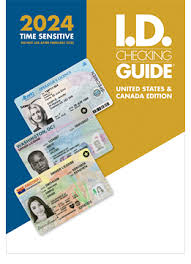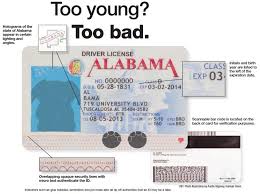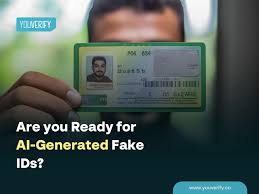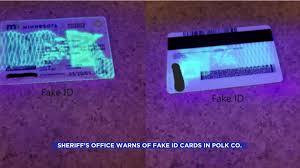Fake IDs are already common in the United States
Fake IDs are already common in the United States
The concept of scannable driver's licenses, such as the Rhode Island Scannable ID, Texas Scannable ID, Wisconsin Scannable ID, and Delaware Scannable ID in the United States, has revolutionized the way we interact with driver's licenses, providing a combination of convenience, security, and efficiency. This technology has become an indispensable tool for law enforcement, businesses, and individuals, facilitating seamless interactions and transactions while maintaining a high level of data integrity. In this detailed exploration, we will dive into various aspects of scannable driver's licenses in the United States, discussing its advantages, implementation, challenges, and future trends.












### Understanding Scannable Driver's Licenses
A scannable driver's license is a form of identification that contains machine-readable information, usually encoded in a barcode or magnetic stripe. This information includes personal details such as the driver's name, address, date of birth, license number, and other relevant data. When scanned using a dedicated device, this information can be retrieved quickly and accurately, providing a more efficient alternative to manual verification.
### Benefits of Scannable Driver's Licenses
#### 1. Enhanced Convenience
One of the most significant advantages of a scannable driver's license is the convenience it provides. In a society where speed and efficiency are critical, the ability to quickly scan and verify driver information can save valuable time for individuals and businesses. For example, during a traffic stop, law enforcement officers can scan a driver's license in seconds instead of spending minutes manually entering the information into a system. This not only speeds up the process, but also reduces the risk of human error.
#### 2. Improved Security
Scannable driver's licenses also enhance security by incorporating advanced technologies and security features. Many states now use two-dimensional barcodes, which have higher data capacity and error correction capabilities than traditional one-dimensional barcodes. These barcodes can encode not only basic driver information, but also biometric data, such as the driver's facial features, which can be used for further verification.
In addition, states have implemented a variety of security measures to prevent fraud and identity theft. These technologies include the use of holograms, watermarks, and other difficult-to-copy elements to make it more difficult for criminals to forge driver's licenses. By incorporating these features, scannable driver's licenses provide a safer and more reliable way to identify people.
#### 3. Seamless Transactions
In addition to law enforcement, scannable driver's licenses can be used for a variety of transactions. For example, many businesses, such as banks and liquor stores, require proof of identity and age verification. With a scannable driver's license, these businesses can quickly and easily verify a customer's information, reducing the time and effort required for such transactions.
### Implementation and Use
The implementation of scannable driver's licenses in the United States has been a gradual process, with states adopting the technology at different rates. Initially, some states used only magnetic stripes to store driver information, but as technology has improved, most states have transitioned to using barcodes, especially 2D barcodes, which provide more versatility and security.
Issuance of a scannable driver's license typically requires a visit to a local Department of Motor Vehicles (DMV) office. Applicants must provide necessary documentation, such as proof of identity, residency, and citizenship, and pass any required tests, such as vision or written tests. Once issued, the driver's license contains a barcode or magnetic stripe that encodes the driver's personal information.
Law enforcement officers and other authorized personnel can read and verify the information on the scannable driver's license using a handheld device or desktop scanner. These devices are designed to be user-friendly and easy to operate, ensuring that even people with limited technical skills can use them effectively.
### Challenges and Limitations
Despite the many benefits of scannable driver licenses, there are challenges and limitations. One of the main issues is the potential for privacy breaches. As personal information becomes increasingly digitized, there is always a risk that sensitive data will be compromised. To mitigate this risk, states have implemented various security measures, such as encrypting the data stored on the barcode and limiting access to authorized personnel only.
Another challenge is the compatibility of scannable driver licenses with different devices and systems. While most modern handheld devices and scanners can read 2D barcodes, older devices may not be able to handle this technology. This can lead to inconsistent verification processes, especially in areas where older technology is still in use.
### Future Trends and Developments
As technology continues to evolve, we can expect to see further enhancements to scannable driver licenses in the United States. One of the most exciting developments is the advent of digital driver licenses, which store the same information as a physical driver license in a digital format, but on a smartphone or other device. These digital licenses can be scanned and verified using a smartphone app or dedicated reader, providing additional convenience and security.
Another trend is the integration of biometric data into scannable driver licenses. By incorporating facial recognition or fingerprint scanning, states can provide an even higher level of security and verification. Some states are already using this technology to provide secure access to government buildings and other facilities.
In addition, we can expect to see more states adopt Real ID-compliant driver licenses, which meet the security standards set by the federal government for official identification purposes. These licenses include additional security features and verification processes to ensure they are tamper-proof and difficult to forge.
### Conclusion
Scannable driver licenses in the United States have become an integral part of our daily lives, combining convenience, security, and efficiency. By combining machine-readable information with advanced security features, these licenses have revolutionized the way we interact with our driver documents. While there are still challenges and limitations to consider, the future of scannable driver licenses is bright as digital technology and biometric verification continue to advance. As we continue to embrace these advances, we can look forward to a more secure, efficient, and convenient future for our driver documents.












 best Arizona fake ID
best Arizona fake ID
 Illinois Driver’s License Opti
Illinois Driver’s License Opti
 fake ID buying guide
fake ID buying guide
 scannable fake ID
scannable fake ID